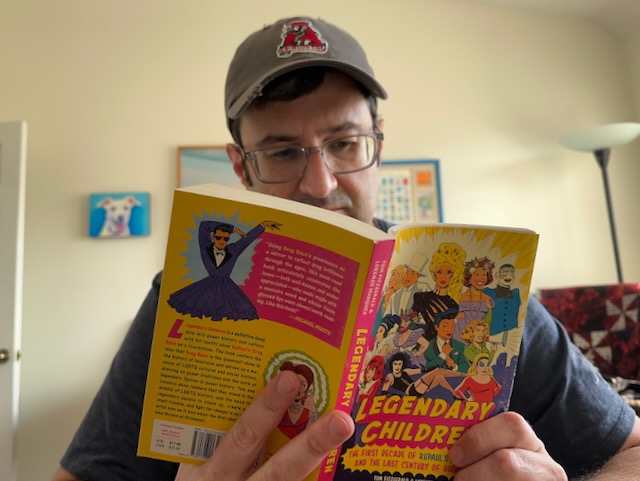Drag was around for a long, long time before RuPaul smeared some Vaseline on a low-resolution camera and launched Drag Race in 2009.1
Men have been dressing as women for entertainment for centuries — what, you didn’t learn about Shakespeare? And women have been dressing as men for just as long — the most famous “trouser role” in opera is Cheribino from The Marriage of Figaro, which I forced the Complementary Spouse to endure in 2018 and will be his Exhibit A if he files for divorce. (Calm down, sweetie. A little culture never hurts anyone.)
Drag, as we think of it today, has existed for more than a century. “Legendary Children,” a 2020 book by Tom Fitzgerald and Lorenzo Marquez, explains how the conventions of Drag Race (reading, celebrity impersonations, fashion, comedy, singing) have deep cultural, societal, and entertainment roots.
Like all drag queens backstage, the queens on Drag Race share tips and techniques from time to time — when they’re not engaging in that age-old drag technique of simply stealing from or copying each other. Drag is an old art form, and quite a bit of what you see the queens do in that Werk Room is born out of decades of men and women perfecting the form and passing on their technical expertise to the next generation.
— “Legendary Children” by Tom Fitzgerald and Lorenzo Marquez
Here in the Tampa Bay area, drag has been around for 125 years. As the Tampa Bay Times reports, the shows were considered family entertainment, drew large crowds, and even offered discounts for children’s tickets.
How is drag both timely and timeless? How is drag both part of our culture and a commentary on it? It’s because it’s all about invention and re-invention. Just ask Mama Ru:
Drag really is all about dipping into pop culture and then reshaping it into something else.
RuPaul
_____
1 Go watch that first season. You’d think it was shot through cheesecloth in an abandoned shack with a ten-dollar decorating budget. The production values were terrible.

